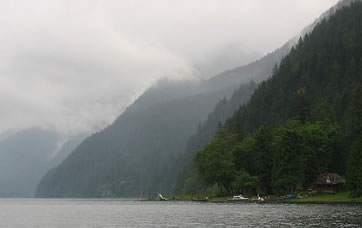The winter of 1805-1806 was miserable in the Pacific Northwest. The men worked through a constant rain to build Fort Clatsop – two rough cabins about fifty feet in length that would hold 32 men, one woman, one baby and a dog. Lewis, Clark, Sacagawea, Charbonneau, and baby Jean Baptiste would stay in one cabin, while the remainder of the Corps lived in the other. The Corps stayed at Fort Clatsop for four months hunting the small elk population that lived near the estuary, making clothes from elk hide, trying desperately to make fires with wet wood, and engaging in laborious tasks to keep up the maintenance of the fort in the wake of constant wet conditions. According to one traveler, there were only twelve rainless days the entire winter! The constant rain led to many in the Corps to contract colds and flus and others, including Meriwether Lewis, to become depressed.
Meriwether Lewis was, however, able to document the region’s plant and animal life as well as the Native Americans who lived there. William Clark worked on drafting the map of lands they had explored, including one that traced their path all of the way from Fort Mandan to Fort Clatsop, which would be valuable to future travelers.
On March 23, 1806, the Corps finally left Fort Clatsop for the long trip back to Missouri.
Did You Know? |

The region in which Lewis and Clark built Fort Clatsop is one of the rainiest places in North America. It receives over 85 inches of rainfall per year, nearly 2.5 times the national average. |
|